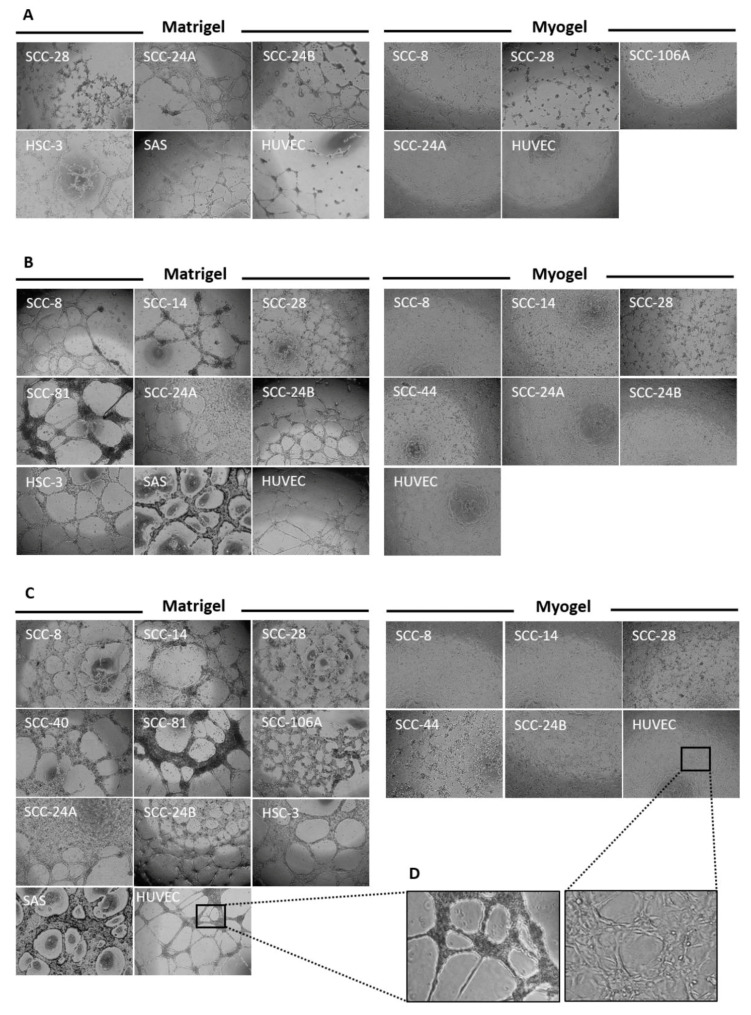Figure 2.
Assessment of tumour cell-derived tubulogenesis in vitro. (A) Thirteen cell lines derived from head and neck squamous cell carcinoma (HNSCC) and normal human endothelial cells (HUVEC) were seeded at a starting cell density of 20 × 103 cells on Matrigel or Myogel. All of the highly metastatic HNSCC cell lines (namely, SCC-24B, HSC-3, and SAS) formed a VM meshwork in Matrigel only, while more primary cell lines formed such tubes in Myogel (n = 4). HUVEC formed tubes in both matrices. (B) At a higher starting cell density of 40 × 103, all metastatic and some primary HNSCC cell lines (n = 7) developed longer and more interlaced VM meshwork in Matrigel. In Myogel, primary tumour cell lines (n = 5) continued to form VM structures with the most extensive meshwork attained by cells originating from the floor of the mouth and gingiva (SCC-28 and SCC-44, respectively). Additionally, the metastatic cell line (SCC-24B) started to initiate consistent tubes in Myogel that were more extensive than its primary counterpart (SCC-24A). (C) When the starting cell density reached 60 × 103, only metastatic and merely two primary cell lines continued to develop thicker and longer VM networks in Matrigel compared with four primary cell lines in Myogel. (D) The HUVEC meshwork has become shorter and more interlaced in Myogel. The images were taken at a magnification of 4×.

